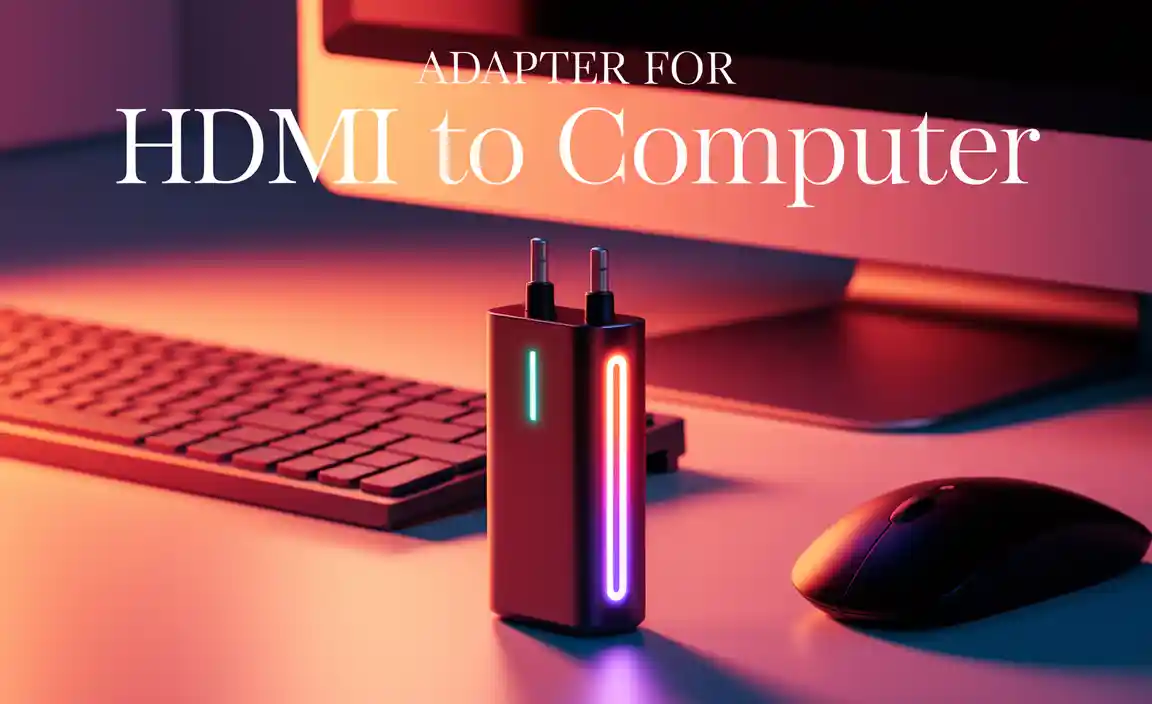Finding a cheap gel car battery for your BMW can power up your ride without draining your wallet. This guide makes choosing and understanding these batteries simple, helping you keep your BMW running smoothly and affordably. We cover what gel batteries are, why they’re great for BMWs, how to pick the right one, and what to expect when buying on a budget.
Cheap Gel Car Battery for BMW: Essential Power for Your Drive
Is your BMW’s engine sputtering to life, or has its battery warning light been flashing a bit too often? A healthy car battery is the heart of your vehicle, and a dead one can leave you stranded. For BMW drivers, finding a reliable and affordable solution like a gel car battery can be a game-changer. They offer great performance and longevity, often at a price that won’t make your eyes water. Whether you’re looking to replace an old battery or just want to keep your BMW’s power in check, this guide is here to help you understand everything you need to know about choosing a budget-friendly gel option.
We know car maintenance can seem complicated, especially when it comes to specialized parts like batteries for a luxury car like a BMW. But don’t worry! We’ll break down the technical stuff into easy-to-understand pieces. You’ll learn what makes a gel battery special, why it might be the perfect fit for your BMW, and how to find a great deal without sacrificing quality. Get ready to power up your understanding and keep your BMW purring!
Why a Gel Car Battery Might Be Your BMW’s Best Friend (and Your Wallet’s)
BMW vehicles are known for their advanced technology and high performance. This means they often require a battery that can keep up with these demands. While traditional lead-acid batteries have been around forever, newer technologies like gel batteries offer some significant advantages, especially for cars with sophisticated electrical systems.
What Exactly is a Gel Car Battery?
A gel car battery is a type of sealed lead-acid battery. Instead of a liquid electrolyte, like in a standard car battery, a gel battery uses a silica-based gel. This gel suspends the sulfuric acid, making it much less prone to spilling and leakage. This design also makes gel batteries more resilient to vibrations and extreme temperatures, which are common challenges in the automotive world.
Think of it like this: instead of a tub of watery soup, it’s more like a thick pudding. This pudding doesn’t slosh around easily, making it a safer and more stable power source for your car.
Advantages of Gel Batteries for Your BMW
BMWs often have a lot of electronics – from advanced navigation systems and premium sound systems to heated seats and complex engine management. These systems draw power even when the car is off. A gel battery is particularly well-suited to handle these demands due to:
- Deep Discharge Recovery: Gel batteries tend to handle deep discharges better than standard flooded batteries. This is important for modern cars that might experience prolonged periods of low power draw.
- Vibration Resistance: The gel electrolyte makes them more resistant to shaking and jolting on the road, contributing to a longer lifespan, especially on less-than-perfect roads.
- Spill Proof: Because the electrolyte is in a gel form, they are virtually spill-proof. This offers an added layer of safety, reducing the risk of acid leaks damaging other car components or causing injury.
- Low Self-Discharge: Gel batteries hold their charge for longer periods when not in use compared to some other battery types.
- Maintenance-Free: Being sealed, they don’t require topping up with water, making them a “fit and forget” solution.
So, What About “Cheap”? Balancing Cost and Quality
When we talk about a “cheap gel car battery for BMW,” it’s important to manage expectations. While gel batteries can be more expensive upfront than basic flooded batteries, their benefits often translate into long-term savings. They tend to last longer, requiring replacement less often. Furthermore, the “cheap” aspect doesn’t mean low quality. It means finding a good value – a battery that performs reliably and lasts well, without breaking the bank.
For a BMW, cutting corners too much on a battery can lead to performance issues or even damage to its sensitive electronics. The goal is to find a reputable brand offering a gel battery at a competitive price point, ensuring it meets the specific requirements of your BMW model. We’ll explore how to do this later.
Choosing the Right Gel Car Battery for Your BMW: What to Look For
Not all gel batteries are created equal, and finding the right one for your specific BMW model is crucial. Simply buying the cheapest one you see might lead to trouble. Here’s a breakdown of what to consider to ensure you get the best value and performance.
1. Know Your BMW’s Requirements
This is the most critical step. BMWs are engineered with specific electrical needs. You need to identify the correct battery specifications for your vehicle. This information can often be found:
- In your BMW’s owner’s manual.
- On the label of your current battery.
- By using online battery finder tools provided by reputable manufacturers or auto parts retailers. You’ll typically need your car’s year, make, model, and engine size.
Key specifications to look for include:
- Group Size: This is a standard measurement that dictates the physical dimensions of the battery (length, width, height) and the placement of the terminals (positive and negative posts). Using the wrong size can mean it won’t fit in the battery tray or the cables won’t reach.
- Cold Cranking Amps (CCA): This measures the battery’s ability to start an engine in cold temperatures. BMWs, especially those in colder climates, require a sufficient CCA rating. Check your owner’s manual for the minimum recommended CCA.
- Reserve Capacity (RC): This indicates how long the battery can supply power if the alternator fails. It’s a measure of endurance.
- Voltage: Virtually all car batteries are 12 volts, but it’s good to confirm.
2. Gel vs. AGM: Understanding the Nuances
When looking for “gel” batteries, you’ll often encounter “AGM” (Absorbent Glass Mat) batteries. Both are types of sealed lead-acid batteries and share many advantages over traditional flooded batteries. In fact, many manufacturers use “gel” and “AGM” almost interchangeably when referring to their sealed, maintenance-free batteries. However, there’s a technical difference:
- Gel Batteries: Use a silica gel that thickens the electrolyte. They are very robust against overcharging and deep discharges but can be more sensitive to charging voltage and temperature, and may have slightly lower cranking power than AGM.
- AGM Batteries: Use a fiberglass mat to absorb the electrolyte. They generally offer higher CCA ratings, better performance in extreme temperatures, and are more tolerant of varying charging voltages. Many modern cars, including many BMWs, are increasingly designed with AGM systems for their enhanced performance.
Given the sophisticated electrical systems in many BMWs, an AGM battery is often the preferred and most direct replacement for the original battery if your car came with one. If you’re specifically seeking a gel battery, double-check that it meets your BMW’s power demands. If your BMW uses an AGM battery from the factory, replacing it with a gel battery could work, but an AGM replacement is typically the safest bet for compatibility and performance.
3. Brand Reputation and Warranty
When aiming for “cheap,” don’t overlook the brand. Established battery manufacturers often have better quality control and more reliable products. Look for brands known for producing quality gel or AGM batteries. Additionally, check the warranty period. A longer warranty (e.g., 2-3 years) often indicates the manufacturer’s confidence in their product’s durability. Even on a budget, a good warranty can save you money in the long run by covering premature failures.
4. Where to Find Affordable Options
The price of a gel car battery for a BMW can vary significantly. Here are some places to look for competitive pricing:
- Online Retailers: Websites like Amazon, eBay, and specialized auto parts e-commerce sites often have a wide selection and competitive pricing. Be sure to check seller reviews and ensure the battery is suitable for automotive use.
- Auto Parts Chains: Large auto parts stores (e.g., AutoZone, O’Reilly Auto Parts, Advance Auto Parts) often have sales and may offer comparable prices, especially for their house brands. Many also offer free in-store testing of your current battery and professional installation.
- Discount Retailers: Some larger discount department stores that carry auto parts may have budget-friendly options, though selection might be limited.
- Direct from Manufacturers (Less Common for “Cheap”): While you might get good quality, buying directly from a battery manufacturer is less likely to be the “cheapest” route unless they have specific clearance or sale events.
Cost Considerations: What’s “Cheap” for a BMW Gel Battery?
For a BMW, a truly “cheap” gel car battery might start from around $100-$150, but prices can easily go up to $200-$300 or more for premium brands or higher-performance models. An AGM battery, which might be a more common original equipment for BMWs, can fall in a similar range. Be wary of batteries priced significantly below this range, as they may compromise on quality, lifespan, or specific automotive requirements.
A good target for a “cheap but reliable” gel or AGM battery for a BMW would be in the $150-$220 range from a reputable brand during a sale.
Table: Comparing Battery Types for Your BMW
To help you decide, here’s a quick look at how gel batteries stack up against other common types you might encounter for your BMW.
| Feature | Standard Flooded Battery | Gel Battery | AGM Battery |
|---|---|---|---|
| Electrolyte | Liquid | Gel | Absorbent Glass Mat |
| Maintenance | Requires topping up water | Maintenance-free | Maintenance-free |
| Vibration Resistance | Poor | Good | Very Good |
| Spill Proof | No | Yes | Yes |
| Deep Discharge Capability | Poor | Good | Very Good |
| Cost (Initial) | Lowest | Medium to High | Medium to High |
| Best For | Basic applications, budget-conscious | Deep cycle needs, some vibration | Modern vehicles, start-stop systems, high performance |
| BMW Suitability | Generally not recommended for modern BMWs | Can be suitable, check specs carefully | Often the O.E.M. type, highly recommended replacement |
Installation: A DIY Guide (with Safety First!)
Replacing a car battery can seem daunting, but it’s a manageable DIY task for many. However, for a BMW, there are often complexities, including battery management systems that need to be reset. It’s always wise to consult your owner’s manual or reliable online BMW forums for model-specific instructions. If you’re not comfortable, professional installation is readily available. Safety is paramount!
Essential Tools and Materials
Before you begin, gather these items:
- New Gel or AGM Battery: Make sure it’s the correct group size, CCA, and terminal type for your BMW.
- Wrench Set/Socket Set: You’ll need the correct size socket or wrench to loosen the battery terminal clamps and the bracket holding the battery in place. Common sizes are 10mm, 13mm, or 15mm.
- Battery Terminal Cleaner/Wire Brush: To clean corrosion from terminals and cable ends.
- Gloves and Safety Glasses: Essential for protecting yourself from battery acid.
- Anti-Corrosion Spray/Grease: To protect the terminals after installation.
- Memory Saver (Optional but Recommended for BMWs): This small device plugs into your OBD-II port and provides auxiliary power to the car’s electronics while the battery is disconnected, preventing loss of radio presets, clock settings, and potentially warning lights related to the battery management system.
- Rag or Paper Towels: For cleaning up.
Step-by-Step Battery Replacement
Always ensure the ignition is OFF and the keys are out of the ignition.
- Locate the Battery: In many BMWs, the battery is not under the hood like in most cars. It’s often located in the trunk, under a floor panel, or sometimes in the passenger footwell. Consult your owner’s manual to find its exact location.
- Disconnect the Negative Terminal FIRST: Use your wrench to loosen the clamp on the negative (black, “-“) terminal. Once loose, carefully lift the cable off the terminal post. Tuck it out of the way so it can’t accidentally touch the battery post.
- Disconnect the Positive Terminal SECOND: Loosen the clamp on the positive (red, “+”) terminal. Lift the cable off the post.
- (Optional) Connect Memory Saver: If using a memory saver, plug it into the OBD-II port now, ensuring it powers up.
- Remove Holding Bracket: There will be a bracket or strap securing the battery in its tray. Use the appropriate socket or wrench to remove the bolts or nuts holding this bracket. Keep the hardware safe.
- Remove the Old Battery: Carefully lift the old battery out of its tray. Batteries are heavy! Use both hands or a battery strap if you have one. Be mindful not to tilt it excessively, even if it’s sealed.
- Clean the Tray and Terminals: Use your wire brush or terminal cleaner to remove any corrosion from the battery tray and the inside of the cable clamps. Clean terminals make for a better connection.
- Install the New Battery: Carefully place the new gel battery into the tray, ensuring it sits securely and correctly oriented for the cables to reach.
- Reinstall Holding Bracket: Secure the new battery in place with the bracket you removed earlier. Tighten it firmly, but don’t overtighten.
- Connect the Positive Terminal FIRST: Place the red positive cable clamp onto the battery’s positive terminal. Tighten the clamp securely.
- Connect the Negative Terminal SECOND: Place the black negative cable clamp onto the battery’s negative terminal. Tighten the clamp securely.
- Apply Anti-Corrosion Spray: Spray a bit of anti-corrosion product or apply battery terminal grease to both terminals to prevent future corrosion.
- Dispose of Old Battery Properly: Battery retailers and service centers are required to accept old batteries for recycling. Never just throw them in the trash.
- Check and Reset Systems: Start the car. Your engine should start normally. You may need to reset your clock, radio presets, and potentially perform a battery registration procedure for the car’s computer. BMWs often have sophisticated battery management systems that may require the new battery to be registered with the vehicle’s computer, especially if it’s an AGM battery or a different capacity than the original. Check your owner’s manual or consult a BMW specialist if you’re unsure.
Important Safety Note: Disconnecting and reconnecting car batteries can be dangerous if done incorrectly. If you are not confident in performing this task, it’s best to have a qualified mechanic or a battery professional at an auto parts store do it for you. They have the tools and experience to do it safely and correctly, including any necessary system resets for your BMW.
Maintaining Your Gel Car Battery for Longevity
Even with a “cheap gel car battery for BMW,” proper maintenance can extend its life and ensure it performs reliably. While gel batteries are “maintenance-free” in terms of adding water, there are still things you can do.
Key Maintenance Tips:
- Keep Terminals Clean: Periodically check the battery terminals for any signs of corrosion (a white or bluish powdery substance). Clean them with a wire brush and a solution of baking soda and water if necessary.
- Ensure Secure Fit: Make sure the battery is firmly secured in its tray and the cables are tightly connected. Loose connections can cause problems and reduce battery efficiency.
- Minimize Drain When Car is Off: Be mindful of leaving accessories like lights, radio, or charging ports running when the car is not in use, especially for extended periods.





